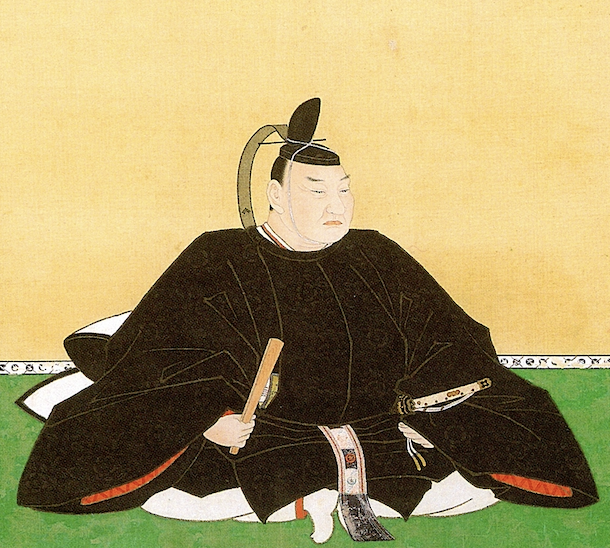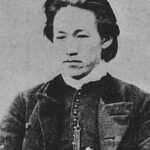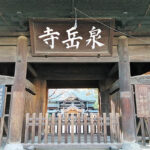

井伊直弼 Ii Naosuke
November 29, 1815 – March 24, 1860)
Why was Ii Naosuke Assassinated?
The “Sakuradamon-gai no Hen” refers to the assassination of Ii Naosuke, the great elder of the Edo Shogunate, by 17 former Mito and Satsuma clansmen, which took place in 1860 near Sakuradamon Gate of Edo Castle, and it is one of the most famous incidents in Japanese history. It often appears in textbooks as a historically important incident.
In this article, we will introduce the personality of Ii Naosuke, who played a central role in the incident, and the cause and background of the incident.
Childhood and the blossoming of his academic talent
First of all, what kind of person was Ii Naosuke, who was attacked in the “Sakuradamon-gai no Hen”? In Japan, many people may have a rather bad image of him as a man who was dogmatic and suppressed his opponents one after another. Here, we will introduce his background and achievements.
He was born in 1815 as the 14th son of a lord of the Hikone domain in Omi. He is said to have been an intelligent child who enjoyed Waka poetry and Zen from an early age.
Although the Hikone domain was prestigious, most of the sons other than the eldest son, who became the lord, were adopted by other domains. However, Naosuke was not able to be adopted by another clan. Therefore, he lived in seclusion by the moat of Hikone Castle for 15 years from the age of 17 to 32, which was not an expected life as a son of a feudal lord. However, his fate changed when his elder brother, who was to have been his successor, died. The position of successor remained in the Ii family, and when he was 35 years old, he became the lord of the Hikone domain upon the death of the feudal lord.
Achievements
His accomplishments included the conclusion of the Treaty of Amity and Commerce between Japan and the United States and the reform of the clan government. During his reign as the lord of the Hikone domain, even Yoshida Shoin praised Naosuke highly for how he conducted politics. His strong sense of responsibility and his proactive approach to improvement have earned him a reputation as a masterful ruler, even today. Why on earth was he assassinated?
Three events that triggered the “Sakuradamon-gai no Hen”
There were various circumstances and events leading up to the “Sakuradamon-gai no Hen”. Here we will introduce the three major events that caused the “Sakuradamon-gai no Hen”.
◯Trigger 1: The Issue of the Shogun’s Successor
First, there was an issue with the Shogun’s successor. Yoshinobu Tokugawa (later renamed Iemochi) became the successor of the powerless 13th shogun, Iesada Tokugawa, with the support of Ii Naosuke and other close associates of the shogun. This was problematic because the 12th shogun, Tokugawa Iekei, and other local prominent figures, including the feudal lord of Kagoshima, Shimazu Nariakira, favored Hitotsubashi Yoshinobu (later Tokugawa Yoshinobu). In other words, he had half-heartedly decided on his successor.
◯Trigger 2: The Treaty of Amity and Commerce
The second trigger was the Treaty of Amity and Commerce. In 1854, a year after the arrival of the black ships led by Perry from the United States, the Treaty of Amity and Commerce between Japan and the United States was signed. At this point, no trade was taking place, and the main treaty was the supply of fuel and food. Harris, who arrived in 1856 as a consul general, requested the start of trade, which resulted in the famous Treaty of Amity and Commerce between the United States and Japan. The content of the treaty was, in essence, convenient for the United States side, as it did not grant Japan tariff autonomy (the right to determine its own tariffs on imported goods) and granted the United States extraterritoriality (the privilege of being in a country’s territory but not being subject to its laws or governance). However, he strongly suppressed the opposition that arose and approved it without obtaining permission from the Imperial Court.
◯Trigger 3: The Great Ansei Incarceration
The third cause was the Great Ansei Incarceration. Naosuke’s political methods, such as concluding treaties without obtaining permission from the Imperial Court, were criticized. At the same time, there was strong opposition to his arbitrary decision on the successor to the shogun. And he punished those who opposed the shogunate administration one after another.
Two sides of the “Sakuradamon-gai no Hen”
On the morning of March 3, 1860, he left the Hikone domain (Hikone City, Shiga Prefecture) in the snow and headed for Edo Castle. After this incident, the authority of the Shogunate declined, and the power of the Imperial Court grew stronger.
Interestingly, if you look at it from a different perspective, you can see another side to this case. While he was an important figure in Japan, his forceful punishments are still criticized and questioned by some. However, in order to maintain the authority and order of the Tokugawa Shogunate and to ensure the stable operation of the state in a time of upheaval, it was unavoidable to punish those who opposed the issue of the shogun’s succession or trade treaties. Some rather believe that a major civil war was able to be avoided because he was killed with all the responsibility on his shoulders. In this way, what may seem to be a selfish and reckless measure can be evaluated as an unavoidable decision from a different perspective.
What we can learn from the Incident outside the “Sakuradamon-gai no Hen”
What we can learn from the incident outside the “Sakuradamon-gai no Hen” is the importance of communication, which is important in our daily lives.
Similar to Naosuke, even when a decision is made after long thinking and care, if that decision is only known to you and the details are not conveyed to those around you, it can often lead in a bad direction. When making choices and decisions in life, it is important not to fall into complacency, but to first communicate them to those around you and make sure they understand.
.
.
.
.




